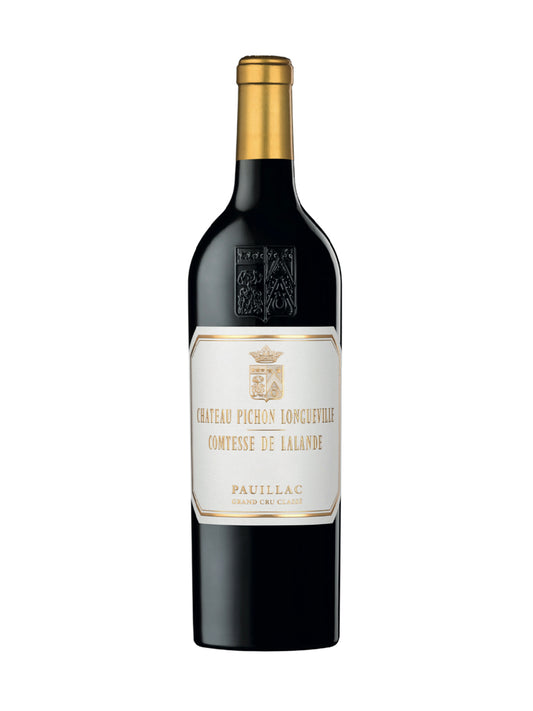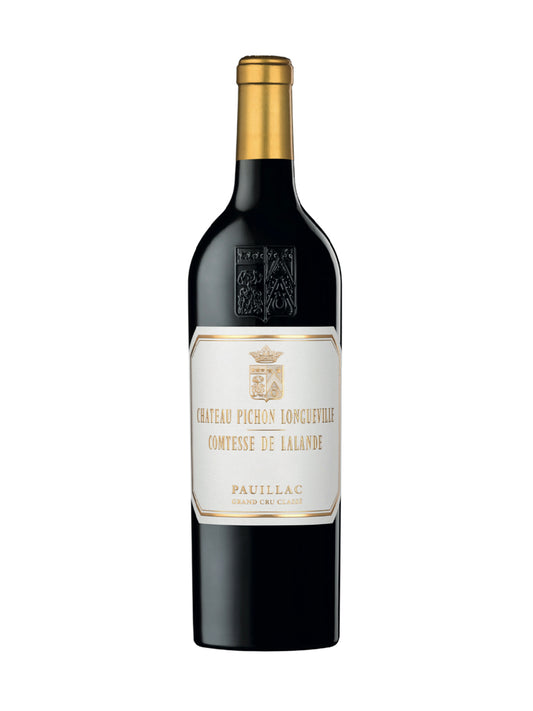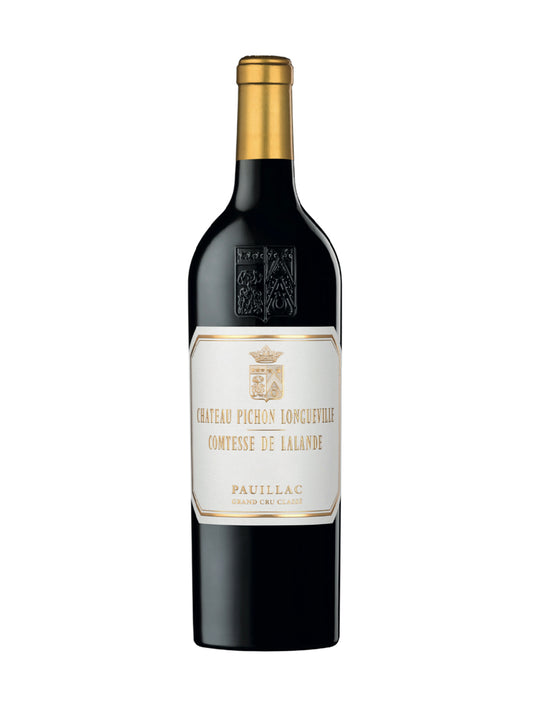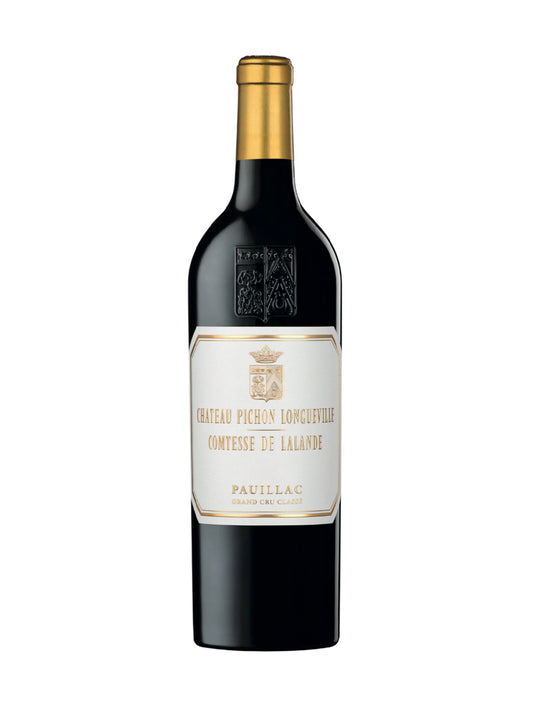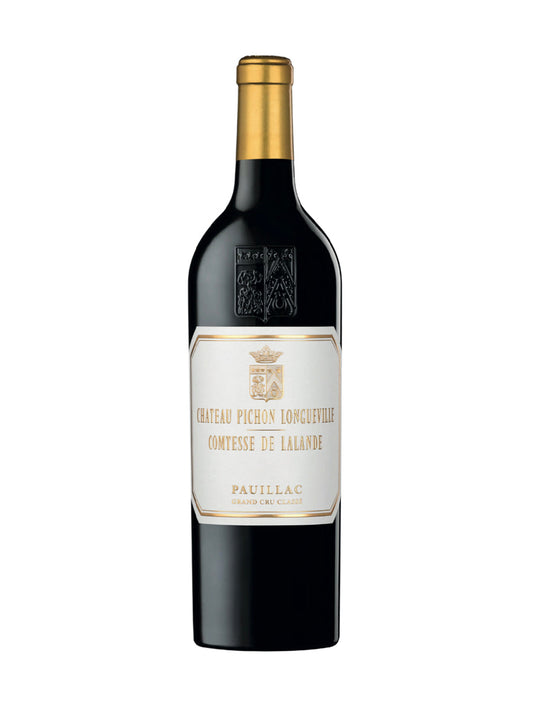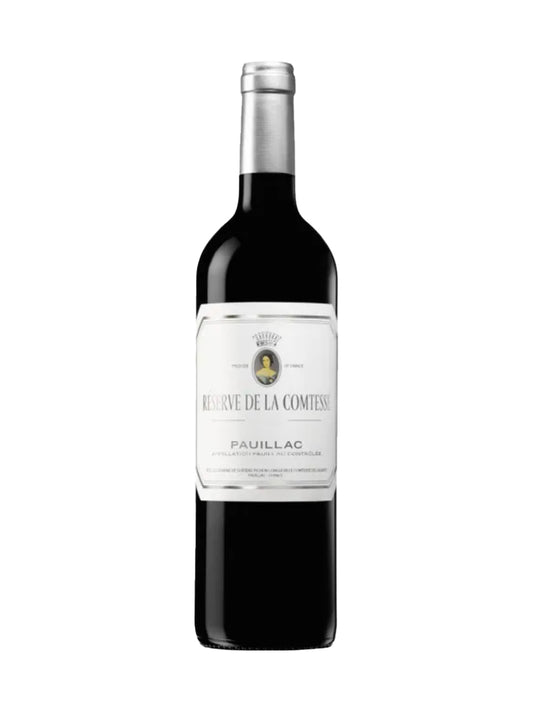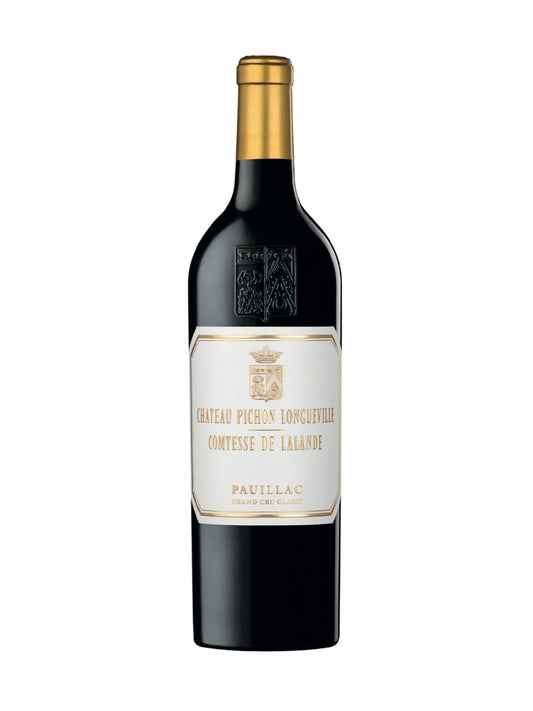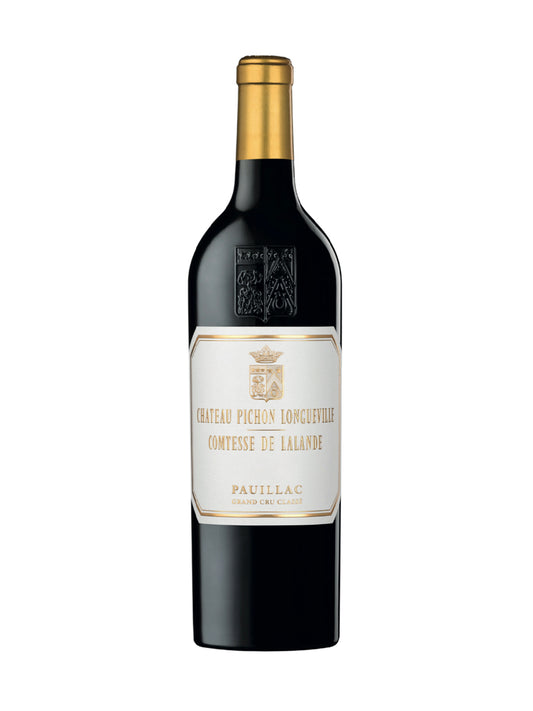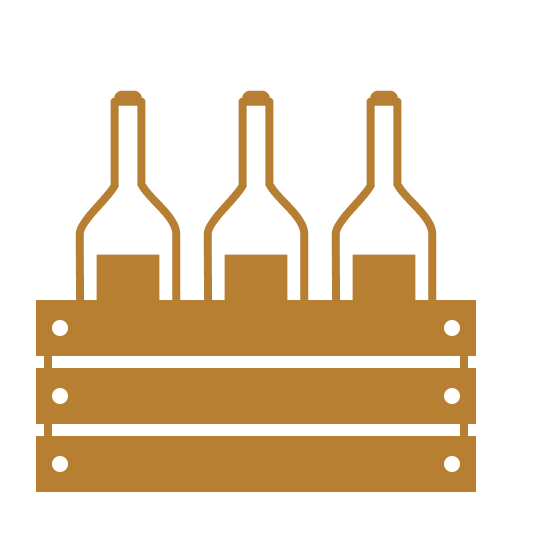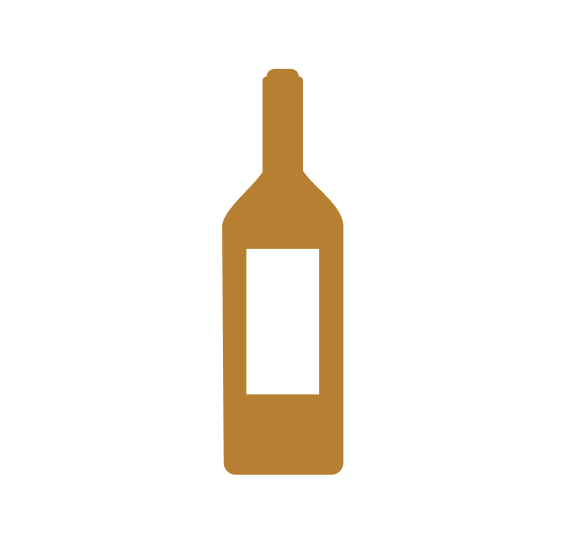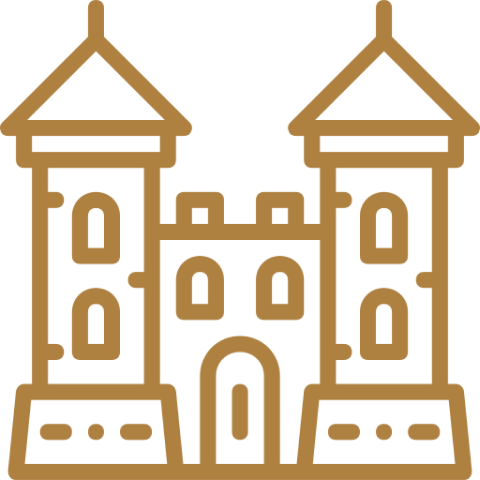CHATEAU PICHON-LONGUEVILLE COMTESSE LALANDE
Château Pichon-Longueville Comtesse de Lalande, located in Pauillac appellation, was founded in 1850, at the end of the Pichon-Longueville estate division. Some of the plots adjoin Château Latour. It was named after Virginie de Pichon Longueville, countess of Lalande by marriage, who made a hard work for the reputation of her estate’s wine. In 1855, the Château was classified as Second Grand Cru. In 1925, Edouard and Louis Mihailhe, wine brokers and from a very active family in Medoc, bought the estate. Since 2007, the château has been the Rouzaud family’s property (Louis Roederer Champagnes) Plus d'information
Découvrez nos millésimes CHATEAU PICHON-LONGUEVILLE COMTESSE LALANDE
Château Pichon Longueville Comtesse de Lalande: a classic Pauillac grand vin with a twist
Classified as a second grand cru in 1855, Château Pichon Longueville Comtesse de Lalande is located next to the famous Château Latour and opposite Château Pichon Baron.
Classified as a second grand cru in...
Découvrez nos millésimes CHATEAU PICHON-LONGUEVILLE COMTESSE LALANDE
Château Pichon Longueville Comtesse de Lalande: a classic Pauillac grand vin with a twist
Classified as a second grand cru in 1855, Château Pichon Longueville Comtesse de Lalande is located next to the famous Château Latour and opposite Château Pichon Baron.
Classified as a second grand cru in 1855, Château Pichon Longueville Comtesse de Lalande is located next to the famous Château Latour and opposite Château Pichon Baron.
A history spanning several centuries
Château Pichon-Lalande shares the same roots as its neighbour Pichon-Baron. Originally, they were one and the same.
With a rich history dating back to the 16th century, the estate was founded by Pierre de Mazure de Rauzan, and for 250 years it remained in the hands of the same family generation after generation. The Chateau was marked by the destinies of 3 women: Théreèe de Rauzan, Germaine de Lajus and Marie Branda de Terrfort. Thérèse de Rauzan married Baron Pichon - Longueville, which explains the origin of the Château's name.
Around 1850, the estate was divided in two: one part went to the sons (Pichon Baron) and the other to the daughters (Pichon Comtesse). The estate took its final name after Virginie de Pichon Longueville married the Countess of Lalande. Virginie de Pichon Longueville, Countess of Lalande, built the Château. The neo-classical architecture is emblematic of the Médoc. It inspires elegance and harmony, in harmony with the surrounding vines and nature.
In 1855, the estate was classified as a Second Growth, in recognition of the high quality of its terroir and wines.
Since 2007, the château has been part of the Roederer Collection, a group of estates belonging to the Louis Roederer family, who also own the eponymous Champagne House.
A large vineyard behind the iconic wines of "Pichon-Lalande"
The wines of Château Pichon Longueville Comtesse de Lalande are rare and iconic, with a unique signature.
An exceptional terroir
Château Pichon Longueville Comtesse de Lalande enjoys an ideal geographical location. Situated between the Atlantic Ocean and the Gironde estuary, the vineyards benefit from a micro-climate that is a valuable moderating factor during extreme weather events.
The soils of Pauillac are renowned for their greatness. They are poor, consisting of gravelly hilltops on clay. What's more, the Pichon-Lalande soils are light and draining, providing excellent conditions for vine growth, even during rainy spells.
A conservatory of grape varieties to preserve the signature of the wines
Since 2009, the 102-hectare vineyard has undergone major restructuring. The Château has created a 'Conservatory of grape varieties' to preserve their living heritage. Using massal selection, the best vines from each plot are selected for replication. In this way, historic vines are replanted with the same plant material. The vines retain the same signature, and a unique identity, while being renewed to sublimate the wines produced each year.
The grape varieties
The four iconic Bordeaux grape varieties planted at the Château have very different but complementary characteristics, and when blended they become one: the expression of the Grand Vin.
The king of grape varieties, Cabernet Sauvignon reigns supreme in Pauillac. Planted on gravelly hilltops and upper slopes, it expresses itself to the full. Cabernet Sauvignon is the power, the structure, the backbone of a Pauillac wine.
Cabernet Franc is best suited to mid-slope clay soils with a light layer of gravel. On these soils, it expresses all its elegance and aromatic richness.
Cool, damp soils composed of sand, clay and gravel are ideal for Merlot. It brings finesse, roundness, balance and complexity to the blend.
Ecological certifications in the service of life
Château Pichon Longueville Comtesse de Lalande is HVE4 certified, an environmental certification attesting to the estate's commitment to biodiversity and sustainable development. The estate's mission is to preserve and enhance its living heritage. Trees have been planted and beehives installed.
To take their approach one step further, the estate began converting to organic farming in 2021.
Pichon-Lalande, the light and dark wine of the Pauillac appellation
Can a wine be full-bodied and soft at the same time? Can it have structure with an airy, delicate texture? The wine of Pichon-Lalande is a fine expression of what a wine located in Pauillac and bordering the Saint-Julien appellation can produce.
The profile of Château
The estate produces 2 wines, a Grand Vin and a Second Vin. The Grand Vin de Pichon Longueville Comtesse de Lalande is described by the Château in these words: "Brilliant brilliance, infinite floral, fruity and spicy nuances. On the palate, the power of Pauillac, the femininity of the Comtesse. Straightforward, precise, racy. Deep and refined.
Masterful expertise
Each plot is treated like a microcosm, with personalised growing practices and vinification. The watchword: let the terroir express itself. This plot-by-plot approach was introduced following the construction of a new vat room in 2012. When it comes to blending, the work of a conductor begins: 33 vats have to be set to music, a symphony of nuances that allows each vintage to create the estate's timeless signature.
Crystal-clear quality
Handling the juices delicately is essential to guaranteeing the expression of the vintage and the terroir. To achieve this, the Château has reappropriated the ancestral technique of gravity, from the reception of the grapes to the filling of the barrels. Exposure to oxygen is reduced, limiting the effects of oxidation and preserving the freshness of the wines.
Ageing in the pure Bordeaux tradition
The wines are aged in French oak barrels for 18 to 22 months, depending on the vintage. 50% of new barrels are used each year.

